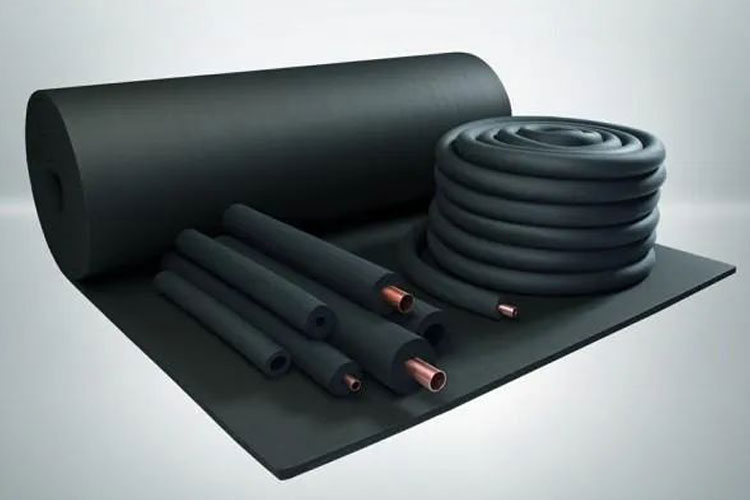

SEARCH
Thermal conductivity is a measure of the ability of a material to conduct heat, which reflects the heat transferred per unit area, per unit temperature difference and per unit time under stable heat transfer conditions. The smaller the thermal conductivity, the better the thermal insulation performance of the material, which can effectively prevent the transfer of heat.

As an efficient insulation material, the thermal conductivity of rubber and plastic insulation shell is usually about 0.034W/(m·K), which is much lower than that of traditional insulation materials. The reason why the rubber and plastic insulation shell has low thermal conductivity is mainly due to its unique material structure and manufacturing process. Rubber and plastic insulation pipe shell is made of high-quality rubber and plastic material, which has good flexibility and airtight, and can effectively prevent heat transfer. At the same time, the porous closed-cell foam structure of the rubber and plastic insulation tube shell can reduce the heat transfer efficiency and further improve the insulation effect.
In practical applications, the low thermal conductivity of rubber and plastic insulation shell means that its insulation effect is excellent. Under the same external conditions, compared with other insulation materials, rubber and plastic insulation shell can more effectively maintain the temperature stability inside the pipeline and reduce heat loss. This can not only improve energy efficiency and reduce energy consumption, but also help to extend the service life of the pipeline.
In addition, the rubber and plastic insulation shell also has many other advantages. For example, it has good moisture-proof, anti-corrosion properties, can resist the erosion of harsh environment; At the same time, the installation is simple, the construction period is short, and the project cost can be reduced. These advantages make the rubber and plastic insulation shell widely used in various fields, such as construction, petroleum, chemical, electric power and so on.
However, we also need to note that thermal conductivity is not the only indicator to measure the performance of insulation materials. In practical applications, it is also necessary to consider the mechanical properties of materials, weather resistance, environmental protection and other factors. Therefore, when selecting insulation materials, we need to conduct a comprehensive assessment according to specific needs and application scenarios.